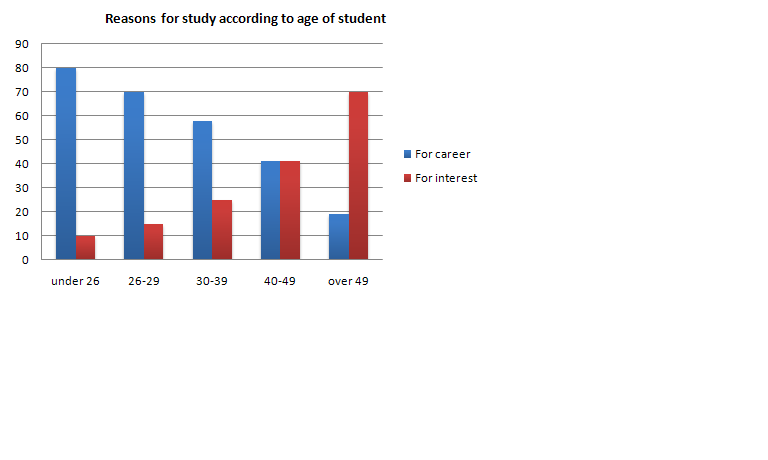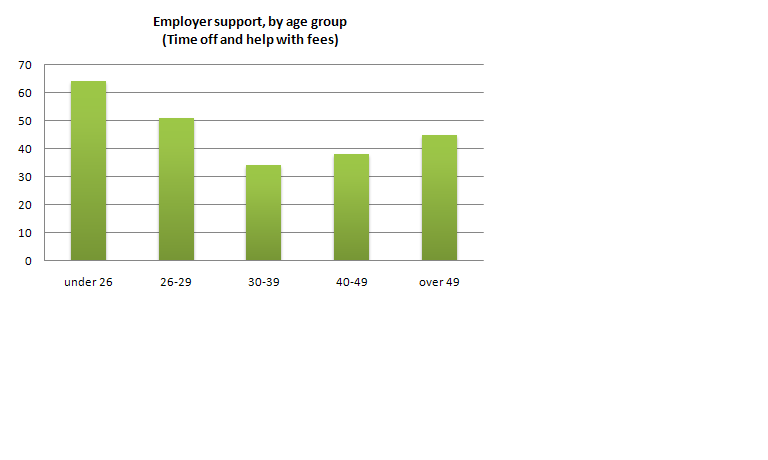It's the first time I access to this web page, I find it very helpful. Please help me to correct my task. Thank you a lot.
The charts below show the main reasons for study among students of different age groups and the amount of support they received from employers.
Summarise the information by selecting and reporting the main features, and make comparisons where relevant.
You should write at least 150 words.
The first graph shows the gradual decrease in study for career reasons with age. The percentage of 80% of students under 26 years old studying for career reasons has experienced the steady decline by around 10-20% every decade, only 40% of 40-49yr olds and 18% of over 49yr olds in late adulthood.
On the contrary, the first graph also shows that study stemming from interest has increased with age. The least popularity was 10% of under 26 years old studying out of interest, and it increased slowly for the next three decades. Then it raised dramatically in late adulthood, 70% of over 49 years olds. Nearly the same number 40-49 years old studying for career and interest.
The second graph shows that employer support was maximum (approximately 60%) for the under 26yr students. It dropped rapidly to 32% up to the third decade of life, and then increased in late adulthood up to about 44%. It was unclear whether employer support was only for career-focused study, but the highest level was for those students who mainly study for career purposes.
The charts below show the main reasons for study among students of different age groups and the amount of support they received from employers.
Summarise the information by selecting and reporting the main features, and make comparisons where relevant.
You should write at least 150 words.
The first graph shows the gradual decrease in study for career reasons with age. The percentage of 80% of students under 26 years old studying for career reasons has experienced the steady decline by around 10-20% every decade, only 40% of 40-49yr olds and 18% of over 49yr olds in late adulthood.
On the contrary, the first graph also shows that study stemming from interest has increased with age. The least popularity was 10% of under 26 years old studying out of interest, and it increased slowly for the next three decades. Then it raised dramatically in late adulthood, 70% of over 49 years olds. Nearly the same number 40-49 years old studying for career and interest.
The second graph shows that employer support was maximum (approximately 60%) for the under 26yr students. It dropped rapidly to 32% up to the third decade of life, and then increased in late adulthood up to about 44%. It was unclear whether employer support was only for career-focused study, but the highest level was for those students who mainly study for career purposes.

Figure.png
Figure1.png
